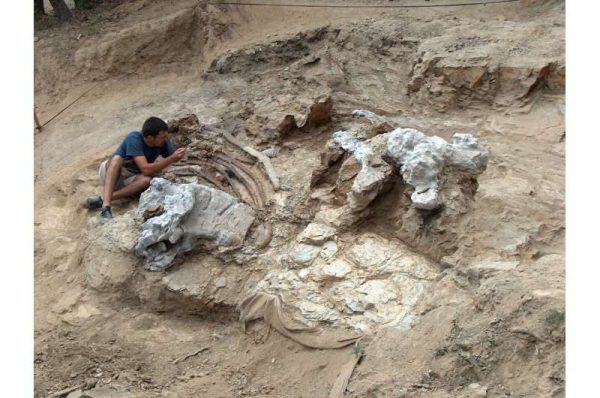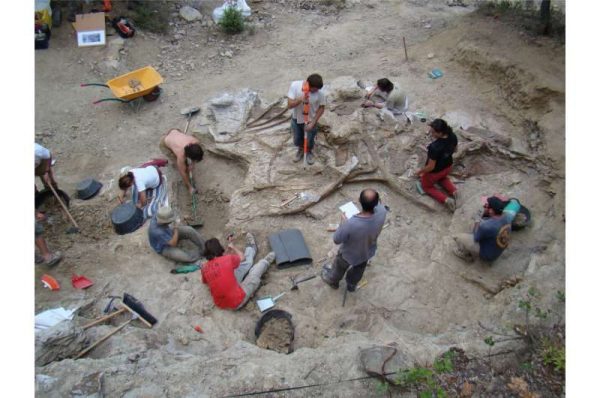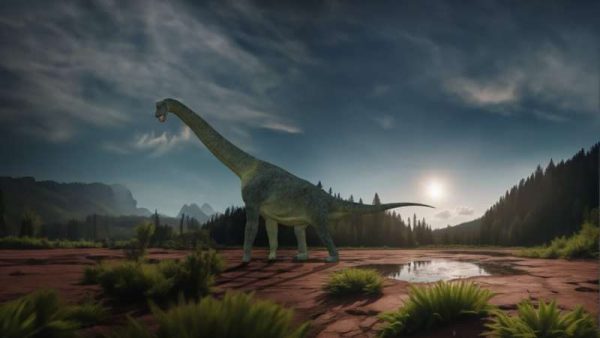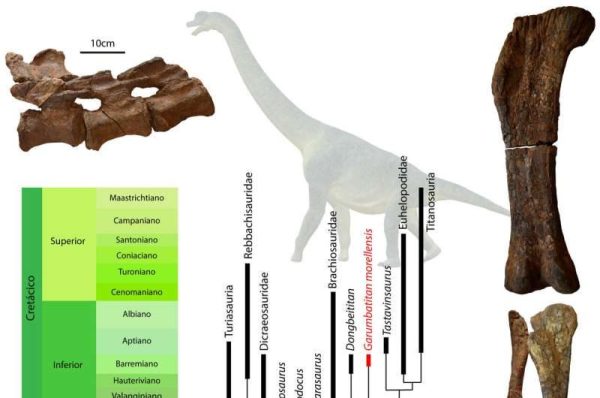In a significant paleontological discovery, researchers have unveiled a new sauropod dinosaur species, Garumbatitan morellensis, that roamed the Iberian Peninsula around 122 million years ago.

The findings, based on remains discovered in Morella, Spain, contribute to expanding the diversity of dinosaurs known from the Early Cretaceous in Europe.
The Els Ports de Morella region in Spain has yielded abundant sedimentary deposits dating back to the Early Cretaceous, offering a rich record of dinosaurs. This area has been a treasure trove for paleontologists, with some of the earliest dinosaur remains in Spain being unearthed here.
The recent discovery of Garumbatitan morellensis by a collaborative team of Portuguese and Spanish paleontologists is detailed in the Zoological Journal of the Linnean Society.

Belonging to the sauropod group, characterized by quadrupedal herbivorous dinosaurs with long necks and tails, Garumbatitan morellensis adds a new dimension to our understanding of sauropod evolution. The remains were excavated in 2005 and 2008 in the Sant Antoni de la Vespa fossil site, revealing one of the largest concentrations of sauropod dinosaur remains from the European Lower Cretaceous.
One of the standout features of Garumbatitan morellensis is its colossal size, with vertebrae exceeding one meter in width and a femur that could reach up to two meters in length. The discovery includes two almost complete and articulated feet, a rarity in the geological record.

Detailed analysis of the fossil remains distinguishes Garumbatitan by the unique morphology of its femur and foot elements. The femur exhibits a morphology similar to more modern sauropods from the Late Cretaceous, setting it apart from other sauropod dinosaurs.
The study also delves into the kinship relationships of Garumbatitan morellensis with other sauropod dinosaurs from the Early Cretaceous in the Iberian Peninsula. Garumbatitan is identified as one of the most primitive members of the Somphospondyli group, known for its diversity during the Cretaceous and eventual extinction at the end of the Mesozoic.

Notably, the research highlights the intricate evolutionary history of sauropods in the European Cretaceous, suggesting connections with lineages in Asia, North America, and even some groups related to African forms. This hints at periods of faunal dispersal between continents.
The fossils of Garumbatitan morellensis, housed in the Temps Museum of Dinosaurs in Morella, form a crucial part of the vast collection of fossil vertebrates from the Iberian Mesozoic, contributing to our understanding of sauropod evolution during the last million years of the Mesozoic era.





